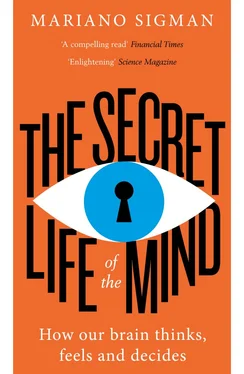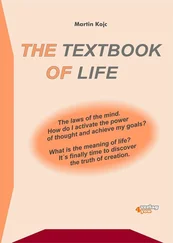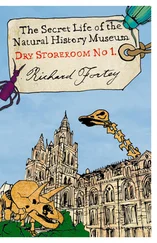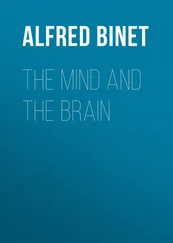We designed an atypical experiment, with the linguist Marco Trevisan and the musician Bruno Mesz, in order to find out whether there is a natural correspondence between music and taste. The experiment brought together musicians, chefs and neuroscientists. The musicians were asked to improvise on the piano, based on the four canonical flavours: sweet, salty, sour and bitter. Of course, coming from different musical schools and styles (jazz, rock, classical, etc.) each one of them had their own distinctive interpretation. But within that wide variety we found that each taste inspired consistent patterns: the bitter corresponded with deep, continuous tones; the salty with notes that were far apart ( staccato ); the sour with very high-pitched, dissonant melodies; and the sweet with consonant, slow and gentle music. In this way we were able to salt ‘Isn’t She Lovely’ by Stevie Wonder and to make a sour version of The White Album by the Beatles.
The mirror between perception and action
Our representation of time is random and fickle. The phrase ‘Christmas is fast approaching’ is strange. Approaching from where? Does it come from the south, the north, the west? Actually, Christmas isn’t located anywhere. It is in time. This phrase, or the analogous one, ‘we’re getting close to the end of the year’, reveals something of how our minds organize our thoughts. We do it in our bodies. Which is why we talk of the head of government, of someone’s right- hand man, the armpit of the world and many other metaphors fn1that reflect how we organize thought in a template defined by our own bodies. And because of that, when we think of others’ actions, we do so by acting them out ourselves, speaking others’ words in our own voice, yawning someone else’s yawn and laughing someone else’s laugh. You can do a simple experiment at home to test out this mechanism. During a conversation, cross your arms. It’s very likely that the person you are speaking to will do the same. You can take it further with bolder gestures, like touching your head, or scratching yourself, or stretching. The probability that the other person will imitate you is high.
This mechanism depends on a cerebral system made up of mirror neurons . Each one of these neurons codifies specific gestures, like moving an arm or opening up a hand, but it does so whether or not the action is our own or someone else’s. Just as the brain has a mechanism that spontaneously amalgamates information from different sensory modes, the mirror system allows – also spontaneously – our actions and others’ actions to be brought together. Lifting your arm and watching someone else do it are very different processes, since one is done by you and the other is not. As such, one is visual and the other is motor. However, from a conceptual standpoint, they are quite similar. They both correspond to the same gesture in the abstract world.
And now after understanding how we adults merge sensory modalities in music, in shapes and sounds and in language, and how we bring together perception and action, we go back to the infant mind, specifically to ask whether the mirror system is learned or whether it is innate. Can newborns understand that their own actions correspond to the observation of another person’s? Meltzoff also tested this out, to put an end to the empirical idea that considers the brain a tabula rasa .
Meltzoff proposed another experiment, in which he made three different types of face at a baby: sticking out his tongue, opening his mouth, and pursing his lips as if he were about to give the child a kiss. He observed that the baby tended to repeat each of his gestures. The imitation wasn’t exact or synchronized; the mirror is not a perfect one. But, on average, it was much more likely that the baby would replicate the gesture he or she observed than make one of the other two. Which is to say that newborns are capable of associating observed actions with their own, although the imitation is not as precise as it will later become when language is introduced.
Meltzoff’s two discoveries – the associations between our actions and those of others, and between varying sensory modalities – were published in 1977 and 1979. By 1980, the empirical dogma was almost completely dismantled. In order to deal it a final death blow, there was one last mystery to be solved: Piaget’s mistake. fn2
One of the loveliest experiments done by the renowned Swiss psychologist Jean Piaget is the one called A-not-B. The first part goes like this: there are two napkins on a table, one on each side. A ten-month-old baby is shown an object, then it is covered with the first napkin (called ‘A’). The baby finds it without difficulty or hesitation.
Behind this seemingly simple task is a cognitive feat known as object permanence: in order to find the object there must be a reasoning that goes beyond what is on the surface of the senses. The object did not disappear. It is merely hidden. A baby that is to be able to comprehend this must have a view of the world in which things do not cease to exist when we no longer see them. That, of course, is abstract. fn3
The second part of the experiment begins in exactly the same way. The same ten-month-old baby is shown an object, which is then covered up by napkin ‘A’. But then, and before the baby does anything, the person running the experiment moves the object to underneath the other napkin (called ‘B’), making sure that the baby sees the switch. And here is where it gets weird: the baby lifts the napkin where it was first hidden, as if not having observed the switch just made in plain sight.
This error is ubiquitous. It happens in every culture, almost unfailingly, in babies about ten months of age. The experiment is striking and precise, and shows fundamental traits of our way of thinking. But Piaget’s conclusion, that babies of this age still do not fully understand the abstract idea of object permanence, is erroneous.
When revisiting the experiment, decades later, the more plausible – and much more interesting – interpretation is that babies know the object has moved but cannot use that information. They have, as happens in a state of drunkenness, a very shaky control of their actions. More precisely, ten-month-old babies have not yet developed a system of inhibitory control, which is to say, the ability to prevent themselves doing something they had already planned to do. In fact, this example turns out to be the rule. We will see in the next section how certain aspects of thought that seem sophisticated and elaborated – morality or mathematics, for example – are already sketched from the day we are born. On the other hand, others that seem much more rudimentary, like halting a decision, mature gradually and steadily. To understand how we came to know this, we need to take a closer look at the executive system, or the brain’s ‘control tower’, which is formed by an extensive neural network distributed in the prefrontal cortex that matures slowly during childhood.
The network in the frontal cortex that organizes the executive system defines us as social beings. Let’s give a small example. When we grab a hot plate, the natural reflex would be to drop it immediately. But an adult, generally, will inhibit that reflex while quickly evaluating if there is a nearby place to set it down and avoid breaking the plate.
The executive system governs, controls and administers all these processes. It establishes plans, resolves conflicts, manages our attention focus, and inhibits some reflexes and habits. Therefore the ability to govern our actions depends on the reliability of the executive function system. fn4If it does not work properly, we drop the hot plate, burp at the table, and gamble away all our money at the roulette wheel.
Читать дальше












